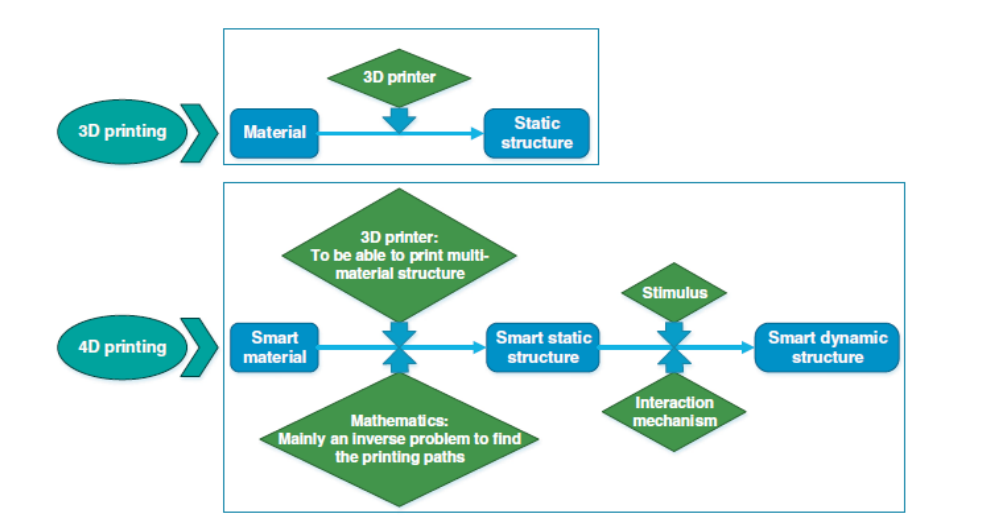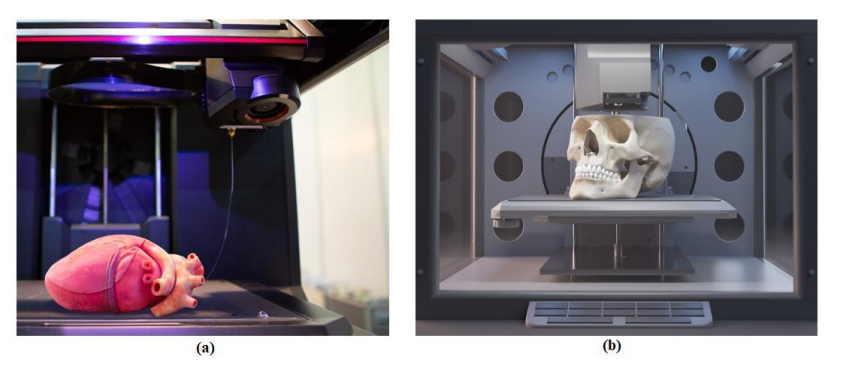Researchers from Libya are doing more than just delving past the limits of 3D printing and into 4D printing—they are investigating a full revolution in digital fabrication where structures can change over time as their environment transforms.
With their findings recently released in ‘4D Printing Technology: A Revolution Across Manufacturing,’ the authors define 4D printing as ‘the use of the 3D printing in the creation of objects which alter/change their shape when they are removed from the 3D printing. The aim is that objects made self-assemble when being exposed to heat, air or water, this is caused by chemical reactions due to the materials utilized in the manufacturing processes.’
4D printing offers benefits due to the versatility available as shapes adjust to heat or moisture, for example, offering properties and functionality suitable for many applications today. Commonly referred to as smart materials, 4D structures are created through mathematical modeling.
A variety of different materials can be used in 4D printing, to include:
- Thermo-responsive
- Moisture-responsive
- Photo-responsive
- Electro-responsive
- Magneto-responsive

Classes of materials that can respond to various types of stimulus including heat, electricity, moisture, light, and magnetic field.[12]
Smart materials show ongoing potential for use in applications like medicine, with the use of 4D printed implants able to deform in size as patients grow; for example, such a device was responsible for saving the life of a child in 2015, solving respiratory problems and adapting as the child grew—eventually dissolving.
“At present, the use of 4D printing technology in ultrasound scans allows, for example, to know more precisely the structural and functional development of the nervous system of the fetus. In the future, vascular endoprosthesis (stents) or other 4D parts that react to body heat and expand to adapt to the patient, may be able to be printed,” explained the researchers.
Clothing and footwear may continue to feel the positive impacts of 4D printing too, offering incredible customization for the wearer, who is able to experience a new level of comfort as items completely adapt to their form.
“The USA military is testing, for example, uniforms that change color depending on the environment, or that regulate perspiration depending on the environment temperature or the soldier’s pulse. 4D printed shoes will also be able to adapt to movement, impact, atmospheric pressure, and temperature.”
As organizations like NASA continue using 3D printing for items like rocket engines, robots, and a wide range of sophisticated projects, they are also reaching to 4D printing for features like metallic fabrics that could be used to offer greater insulation for astronauts. Smart materials able to deform quickly are also being tested for use in automobile airbags.
“Smart printing can be applied to many fields from simple changes of shape to bio printing for organisms,” concluded the researchers. “Using multi-material 3D printing technology and smart materials, 4D printing has been improved. 4D printing provides a feasible method to fabricate compact deployable products structures. Smart materials used are the cornerstone for 4D printing technology. This new technology will reduce the energy expenditure resource and consumption in the industry.”
What do you think of this news? Let us know your thoughts! Join the discussion of this and other 3D printing topics at 3DPrintBoard.com.
[Source / Images: ‘4D Printing Technology: A Revolution Across Manufacturing’]
The post 4D Printed Structures to Impact Many Industries in the Future appeared first on 3DPrint.com | The Voice of 3D Printing / Additive Manufacturing.





